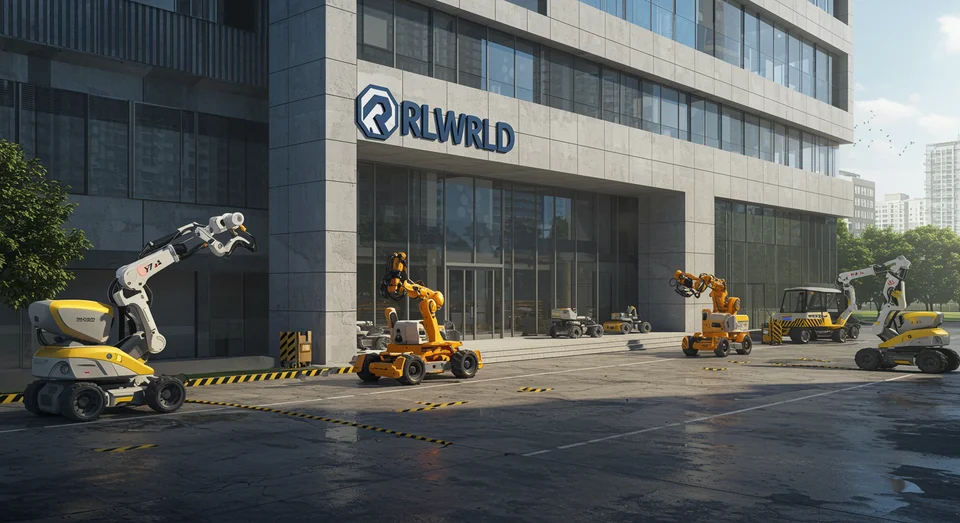RLWRLD Redefines Robotics with AI Fusion, Backed by $14.8M in Seed Funding
383 views
RLWRLD and the Rise of Intelligent Robotics: A New Chapter in Automation
In a year that saw the installation of over 540,000 industrial robots worldwide, bringing the global total to more than 4 million, the robotics industry seems to be entering a transformative era. At the forefront of this evolution is RLWRLD, a South Korean startup that is combining artificial intelligence and robotics to redefine what machines can do. Founded in 2024 by serial entrepreneur Jung-Hee Ryu, RLWRLD is not merely riding the wave of automation but attempting to reshape its very foundation. Backed by $14.8 million in seed funding from prominent investors such as Hashed, LG Electronics, and SK Telecom, the company is poised to make significant strides in industrial and domestic robotics.

RLWRLD’s ambition is as bold as it is timely. By integrating large language models—those AI systems that have revolutionized natural language processing—with traditional robotics software, the company aims to create robots capable of both agile physical movements and logical reasoning. This fusion could allow machines to perform tasks requiring a level of adaptability and precision previously confined to human hands and minds. Early projects include the development of robots with advanced five-finger hand movements, a feat that could unlock new possibilities in manufacturing, logistics, and beyond.
The funding secured by RLWRLD will be channeled into several strategic areas: proof-of-concept projects, the acquisition of cutting-edge computing infrastructure and robotic hardware, and the recruitment of top-tier research talent. These investments reflect the company’s commitment to tackling some of the most challenging aspects of robotics, from dexterous manipulation to seamless integration into existing industrial processes. While the initial focus is on automation within factories, RLWRLD envisions a future where its robots could operate in retail spaces, warehouses, and even homes, performing tasks as diverse as stocking shelves, sorting packages, or assisting with household chores.
What sets RLWRLD apart is its ability to leverage the manufacturing strengths of Korea and Japan, two nations renowned for their technological prowess and precision engineering. By addressing gaps in AI infrastructure and fostering venture creation in the region, RLWRLD is positioning itself as a bridge between cutting-edge research and real-world application. This regional focus is particularly significant given the challenges associated with scaling AI-driven robotics, from data collection to hardware compatibility.
The timing of RLWRLD’s emergence is no coincidence. The global robotics market is not only expanding but also evolving, with demand shifting from simple, repetitive tasks to more complex, adaptive roles. According to the International Federation of Robotics (IFR), the record number of industrial robots installed in 2023 reflects a growing appetite for automation across sectors. Yet, while the numbers are impressive, they also underscore a critical limitation: the majority of these robots are designed for narrowly defined tasks, such as welding or assembly-line work. RLWRLD’s approach, by contrast, seeks to transcend these boundaries, creating machines that can think as well as act.
The implications of such advancements are profound. In industrial settings, robots capable of logical reasoning could optimize production lines, reduce waste, and enhance worker safety by taking over hazardous tasks. In logistics, they could streamline supply chains by adapting to unpredictable variables, such as sudden changes in inventory or delivery schedules. And in domestic environments, they could offer a level of assistance that goes beyond vacuuming floors or mowing lawns, potentially transforming the way we live and work.
However, RLWRLD’s journey is not without its challenges. Developing a foundational AI model for robotics requires not only technical expertise but also a robust ethical framework. Questions about job displacement, data privacy, and the potential misuse of advanced robotics loom large. Additionally, the integration of AI into physical systems remains a complex and resource-intensive endeavor, requiring sustained investment and interdisciplinary collaboration.
Yet, if anyone is equipped to navigate these complexities, it is Jung-Hee Ryu. As his third startup, RLWRLD benefits from his deep understanding of both the opportunities and pitfalls of tech entrepreneurship. By focusing on proof-of-concept projects and generating revenue through collaborations and demonstrations, the company is adopting a pragmatic approach to innovation—one that balances ambition with feasibility.
RLWRLD’s vision also aligns with broader trends in the AI and robotics industries. The convergence of machine learning and robotics has been a long-standing goal for researchers, but recent advances in computing power and algorithmic design have brought it within reach. Companies like RLWRLD are not just pushing the envelope; they are redefining the envelope itself, opening up possibilities that were once the stuff of science fiction.
As we stand on the cusp of a new era in automation, RLWRLD’s efforts serve as both a reflection of and a catalyst for the changes sweeping through the industry. By combining the precision of robotics with the adaptability of AI, the company is not only enhancing what machines can do but also challenging us to rethink the role of technology in our lives. Whether in factories, warehouses, or homes, the robots of tomorrow may well owe their capabilities to the groundbreaking work being done today.
In the end, RLWRLD’s story is not just about robots; it is about the human drive to innovate, to solve problems, and to imagine a better future. And as the company continues to push the boundaries of what is possible, it reminds us that the true measure of technology lies not in its complexity but in its potential to make the world a more efficient, equitable, and inspiring place.
